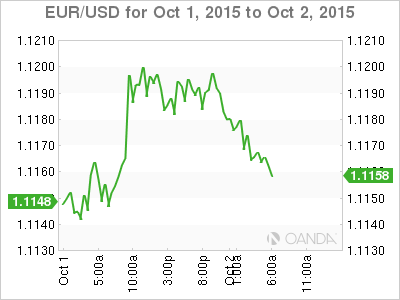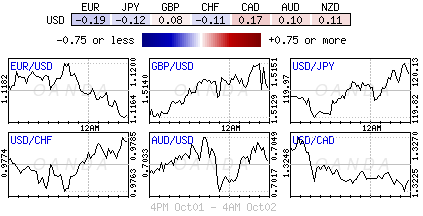The dollar edged higher on Friday before a U.S. employment report that may bolster expectations the Federal Reserve will raise U.S. interest rates this year, for the first time in almost a decade.
Since the Fed declined to raise rates in September, the dollar has gained around 2.5 percent against a basket of major currencies as Fed Chair Janet Yellen and other policymakers have kept alive the prospect of a rate rise later this year.
The dollar index was up 0.2 percent on Friday at 96.287. The euro fell 0.3 percent to $1.1160.

That left the euro on track for a third straight week of losses against the dollar, its worst run in eight months, hurt by bets the European Central Bank will expand its 1 trillon-euro bond-buying program and by a renewed appetite for risk.
The euro has benefited in recent months during periods of risk aversion. Investors who had held euro-funded positions on riskier but higher-yielding currencies have unwound those so-called carry trades by buying back euros.
Now markets are shifting back towards risk, if only temporarily, said Ian Stannard, Morgan Stanley’s European head of G10 FX strategy in London. The latest data from China – worries about which have driven much of the risk aversion in recent months – was not as bad as some had expected.
“We think there is a potential for a short-term but tradable risk rebound to take place … so we’ve turned quite positive on some of the currencies that have been under the most pressure recently,” Stannard said, citing the Australian and Canadian dollars.
“That means we think the euro will come under some renewed pressure as well,” he added.
Economists expect U.S. nonfarm payrolls data, due at 0730 EDT, to show that employers added 203,000 jobs in September, according to a Reuters poll. ECONUS
“Fed Chair Yellen has already mentioned that labor conditions are improving and hinted that developments overseas, notably in China, and prices were chief concerns,” said Shinichiro Kadota, FX strategist at Barclays (LONDON:BARC) in Tokyo.
“A very bullish report would of course have a big impact. But the Fed may not make its rates decision on employment data alone,” he said.
